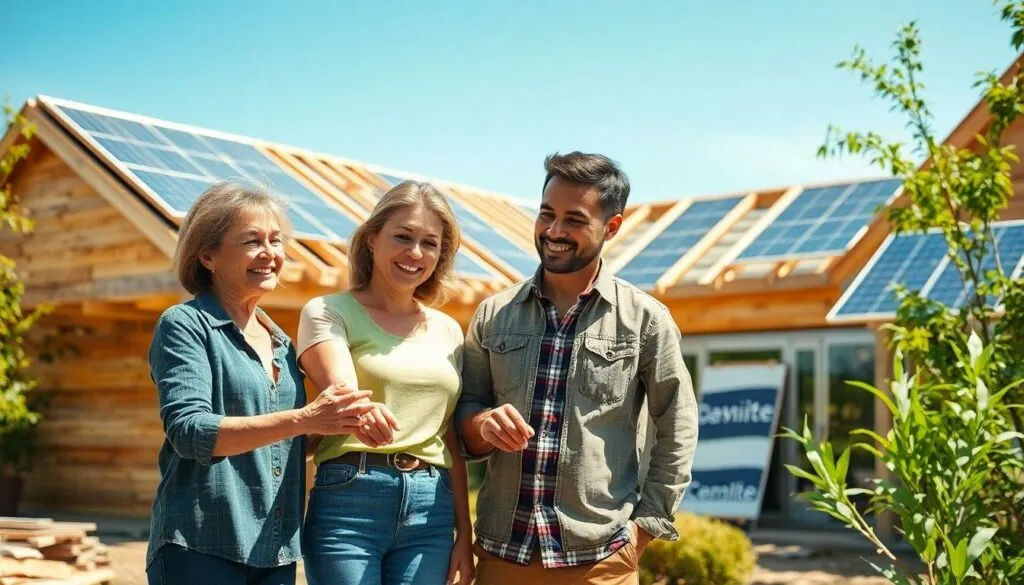Table of Contents
ToggleIn a world where the planet’s health is increasingly at stake, sustainable living builders are stepping up like eco-warriors in hard hats. They know that building a home doesn’t have to mean bulldozing the Earth. Instead, they craft spaces that harmonize with nature, using materials and practices that make Mother Earth proud.
Imagine a home that not only looks good but also feels good—like hugging a tree without the splinters. These builders are redefining what it means to be comfortable, stylish, and environmentally friendly. From energy-efficient designs to innovative materials, they’re turning the construction industry on its head, one green brick at a time. So, if you’re ready to join the sustainable movement without sacrificing your sense of style, it’s time to meet the builders who are making it happen.
Overview of Sustainable Living Builders
Sustainable living builders focus on creating structures that minimize environmental impact. They prioritize eco-friendly materials such as reclaimed wood, bamboo, and recycled steel. Energy efficiency is key, often integrating solar panels, high-efficiency windows, and advanced insulation techniques.
Design principles include maximizing natural light and ventilation, reducing reliance on artificial lighting and heating. Many builders embrace innovative technologies, like greywater recycling systems that reuse water for landscaping.
Collaboration plays a significant role in these projects. Architects, engineers, and clients work together to find sustainable solutions tailored to individual needs. This teamwork ensures that each aspect of home construction meets eco-friendly standards while maintaining aesthetic appeal.
Cost-effectiveness becomes a consideration through the initial investment in sustainable materials. The long-term savings on energy bills and maintenance often justify these upfront costs. Studies show that homes built with sustainable practices can reduce energy usage by 30% or more.
Local sourcing strengthens community ties and reduces transportation emissions. Builders who source materials locally not only support nearby economies but also minimize their carbon footprint. Projects often highlight the beauty of the surrounding landscape, creating harmony between the home and its environment.
Sustainable living builders are leading a movement that proves eco-conscious living is feasible. Crafting homes that reflect both quality and sustainability, they inspire others to adopt similar practices. Embracing this approach elevates the concept of home beyond mere shelter, promoting a healthier lifestyle for future generations.
Key Features of Sustainable Living Builders

Sustainable living builders emphasize practices that enhance both environmental responsibility and aesthetic appeal. They focus on materials and energy systems that align with eco-friendly living.
Eco-Friendly Materials
Sustainable living builders prioritize eco-friendly materials to reduce environmental impact. They often use reclaimed wood for durability and aesthetic appeal. Bamboo stands out for its rapid growth and renewability, making it a popular choice. Recycled steel offers structural integrity while minimizing waste. Builders select non-toxic paints and finishes to ensure healthier indoor air quality. Emphasis on local sourcing supports community economies and decreases transportation emissions. By implementing these materials, builders create homes that are both sustainable and beautiful.
Energy Efficiency
Energy efficiency stands as a cornerstone of sustainable living construction. Builders incorporate solar panels to harness renewable energy directly from the sun. Insulation methods are advanced, ensuring that homes maintain optimal temperatures with minimal energy use. Energy-efficient windows reduce heat loss and enhance natural lighting. Smart home technology further optimizes energy consumption by monitoring usage patterns. Techniques such as passive solar design enhance ventilation, promoting comfort without excessive energy reliance. Overall, energy-efficient features not only lower utility bills but also contribute to sustainable living practices.
Benefits of Choosing Sustainable Living Builders
Sustainable living builders offer numerous advantages that benefit both the environment and homeowners. They play a critical role in fostering eco-friendly construction practices, providing stylish homes without sacrificing comfort.
Environmental Impact
Focusing on environmentally responsible practices, sustainable living builders significantly reduce ecological harm. They utilize eco-friendly materials like reclaimed wood, bamboo, and recycled steel, minimizing waste. Integration of energy-efficient systems like solar panels helps decrease reliance on fossil fuels. Natural light and ventilation strategies enhance indoor air quality by reducing the need for artificial lighting and heating. Additionally, collaboration with architects and engineers ensures that homes remain in harmony with their environments.
Long-Term Savings
Long-term financial benefits accompany the initial costs of sustainable living. Investing in energy-efficient designs often leads to reduced energy bills over time. Advanced insulation and energy-efficient windows further optimize heating and cooling expenses. Homeowners may also benefit from tax incentives or rebates for utilizing renewable energy systems. Local sourcing of materials reduces transportation costs, further contributing to affordability. Ultimately, sustainable builders provide cost-effective solutions that pay off through both savings and increased property value.
Types of Sustainable Building Practices
Sustainable building practices encompass various strategies aimed at minimizing environmental impacts while ensuring comfort and style in home design.
Passive Design
Passive design optimizes a building’s orientation, layout, and materials to naturally regulate temperature and light. This strategy enhances energy efficiency by reducing reliance on mechanical heating and cooling systems. Key elements include maximizing window placement for daylighting and designing overhangs that provide shade during summer months. Additionally, utilizing thermal mass materials can help store heat during the day and release it at night. All these features work together to create comfortable living spaces without additional energy costs.
Renewable Energy Integration
Renewable energy integration focuses on incorporating alternative energy sources into building designs. Solar panels top many sustainable homes, transforming sunlight into electricity. Wind turbines and geothermal systems also offer viable options for homeowners aiming to lower their carbon footprint. Furthermore, energy storage solutions, such as batteries, allow residents to harness renewable energy for use during peak demand times. This practice not only reduces dependency on fossil fuels but also promotes energy independence, ultimately leading to long-term savings on utility bills.
Sustainable living builders are paving the way for a greener future by creating homes that blend style with environmental responsibility. Their innovative approaches not only reduce ecological footprints but also enhance the quality of life for homeowners. By prioritizing eco-friendly materials and energy-efficient designs, they demonstrate that sustainable living doesn’t mean sacrificing comfort or aesthetics.
As more people recognize the long-term benefits of sustainable building, including financial savings and improved health, the movement continues to gain momentum. Embracing this lifestyle choice not only supports individual well-being but also contributes to a healthier planet for generations to come. The commitment of sustainable living builders serves as an inspiring model for anyone looking to make a positive impact through their housing choices.




